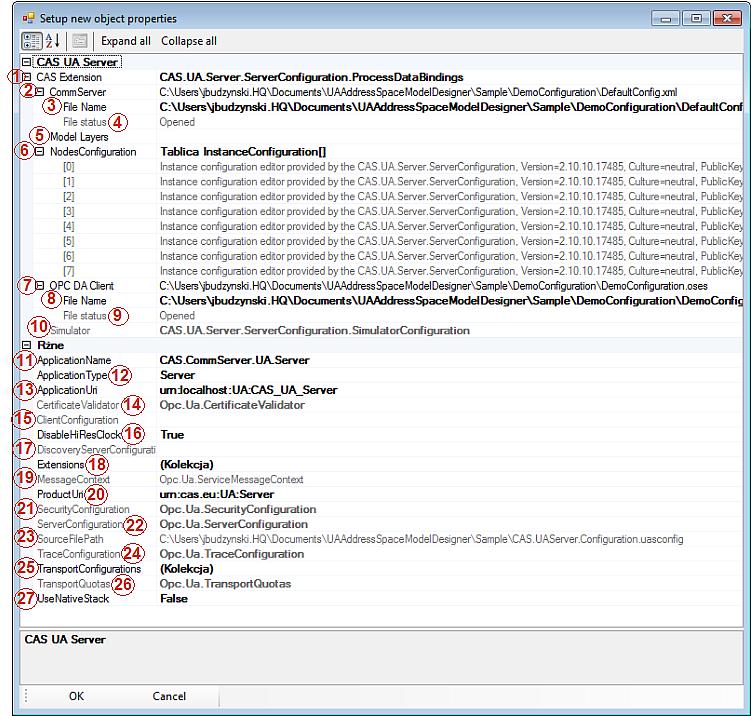UA Server configuration |
Below – a description of a property grid with OPC UA server configuration:

Description of the server configuration properties:
Vendor specific extension of the default UA configuration. For CommServer UA this extension is called "CAS extension". This extension contains the configuration of server specific functions.
Configuration properties of the CommServer engine.
Location of the CommServer engine configuration file (the default name is DefaultConfig.xml).
Status of the CommServer engine configuration file (e.g. Opened).
Configuration properties of namespaces, *.uanodes and *.csv files containing the configuration of the nodes.
Configuration of the data bindings for particular nodes.
Configuration properties of the OPC DA Client data source.
Location of the OPC DA Client data source configuration file (OPC Viewer session file, default name for the SampleSolution is DemoConfiguration.oses).
Status of the OPC DA Client data source configuration file (e.g. Opened).
Configuration properties of the Simulator data source (random data generator).
Descriptive name for the application (not necessarily unique).
Type of the application. It might be Server, Client, ClientAndServer or DiscoveryServer.
Unique identifier for the application instance.
Mechanis, that validates the certificate.
Additional configuration for client applications.
Disabling / enabling of a high resolution clock.
Additional configuration for discovery servers applications.
Bucket to store additional application specific configuration data.
ServiceMessageContext mechanism
Unique identifier for the product.
Security configuration for the application.
Additional configuration for server applications.
Path to the file that contains this configuration.
Configuration of the trace and information about the log file.
Collection that contains the transport configuration for the application.
Quotas that are used at the transport layer.
Indication whether the native stack should be used.